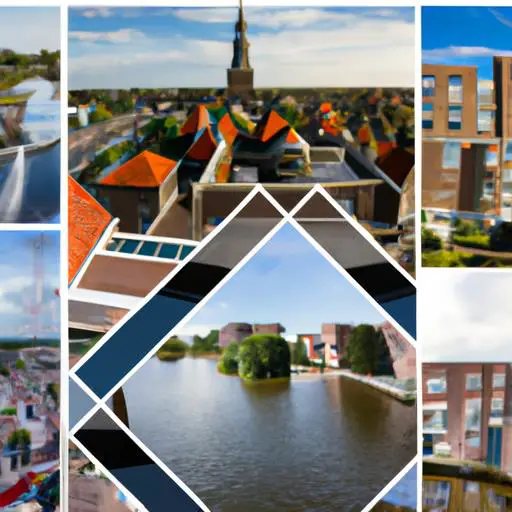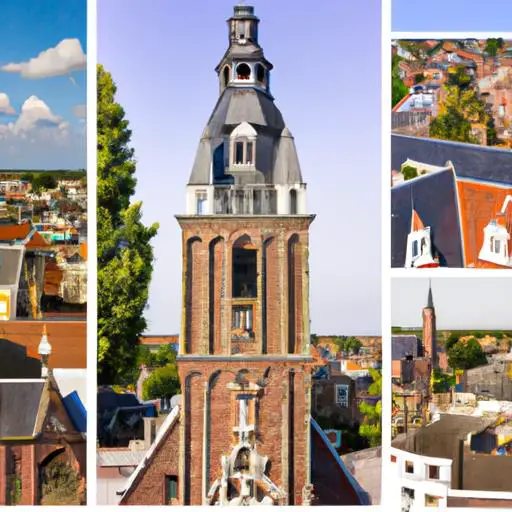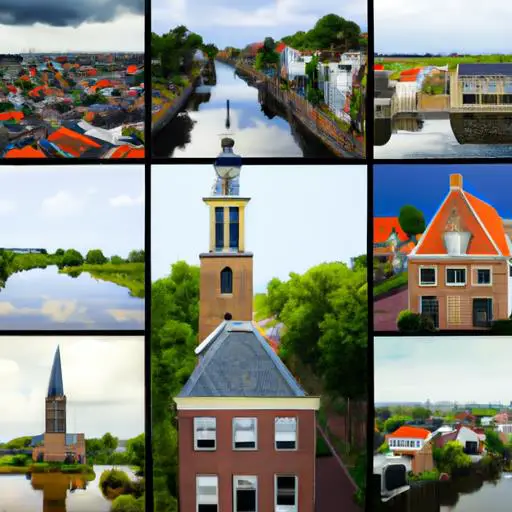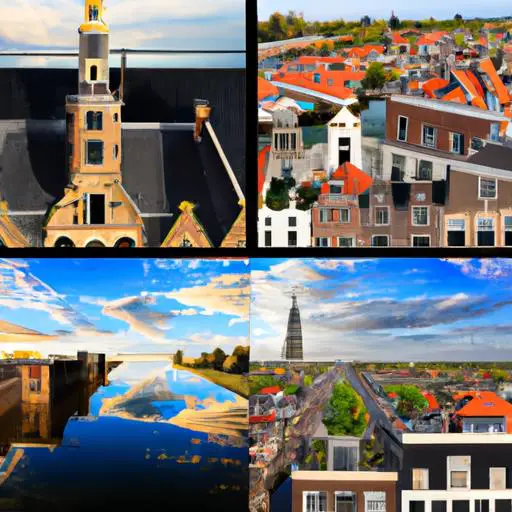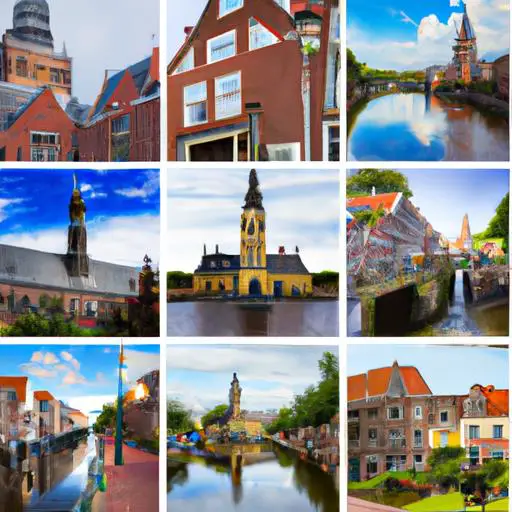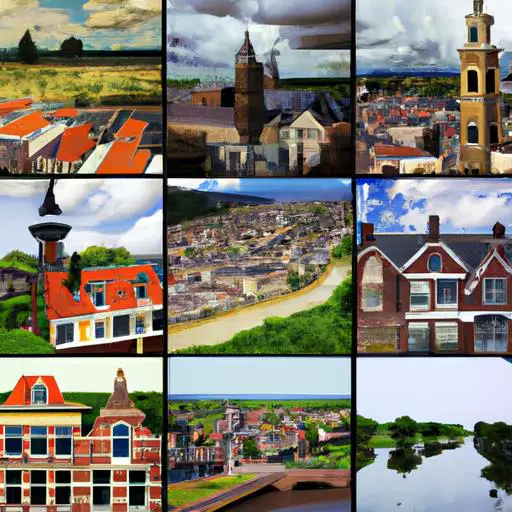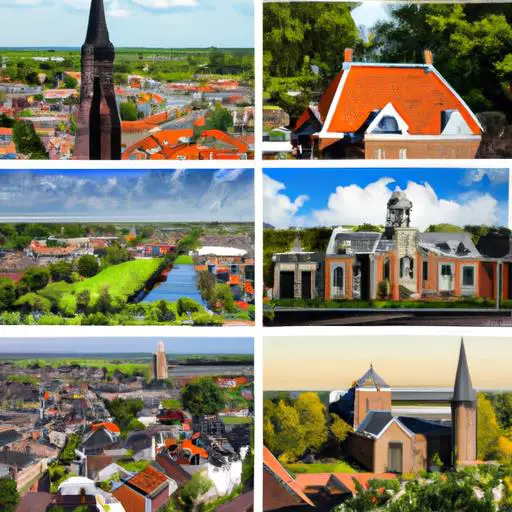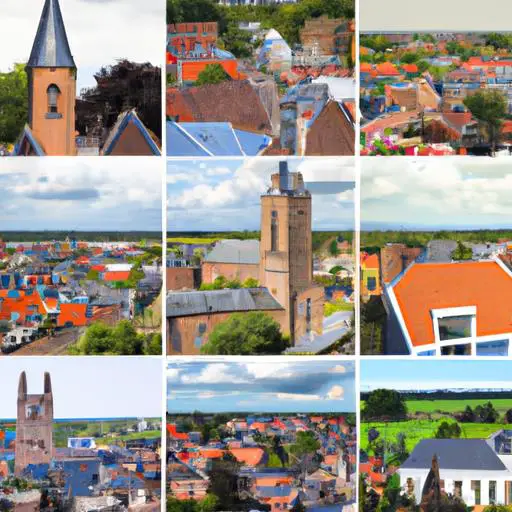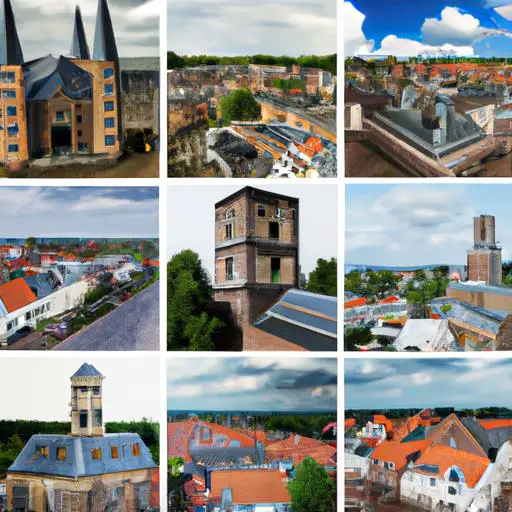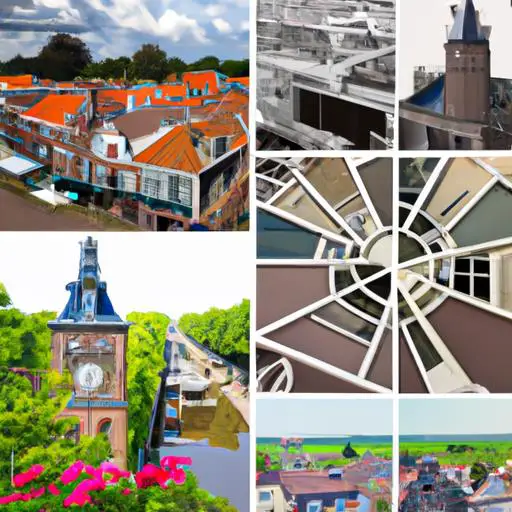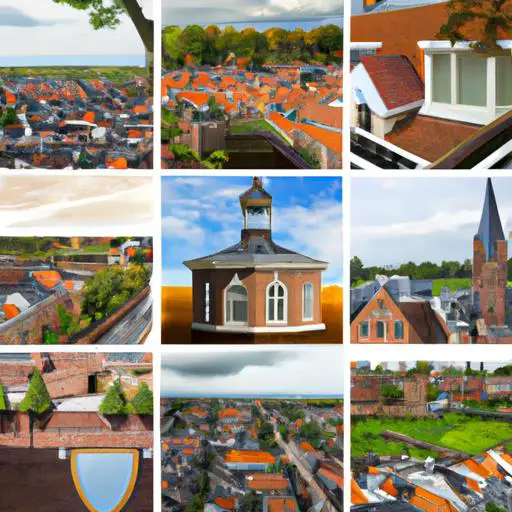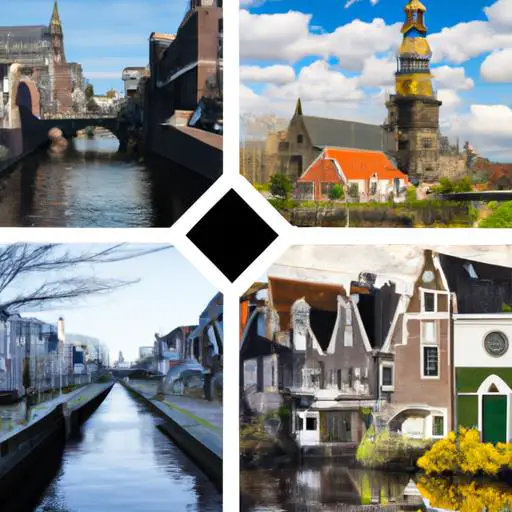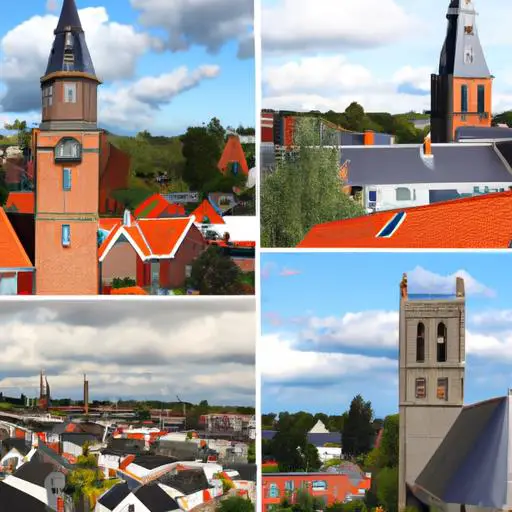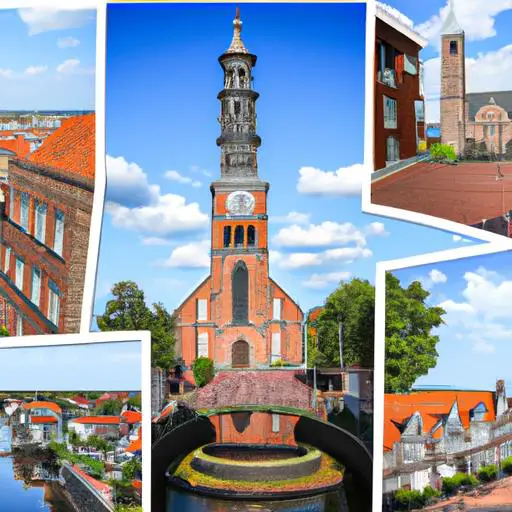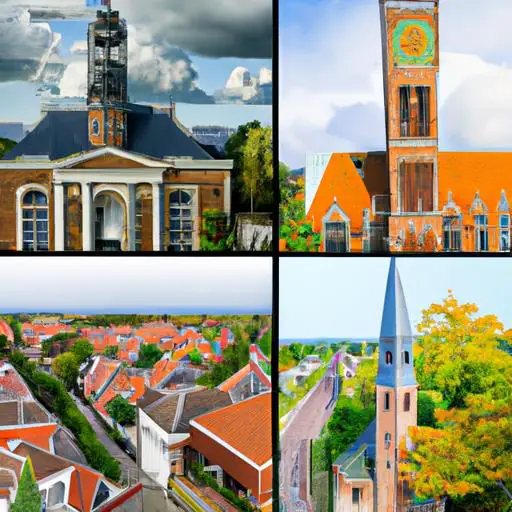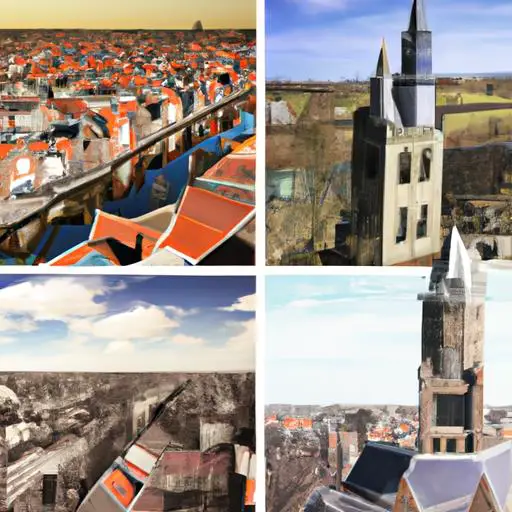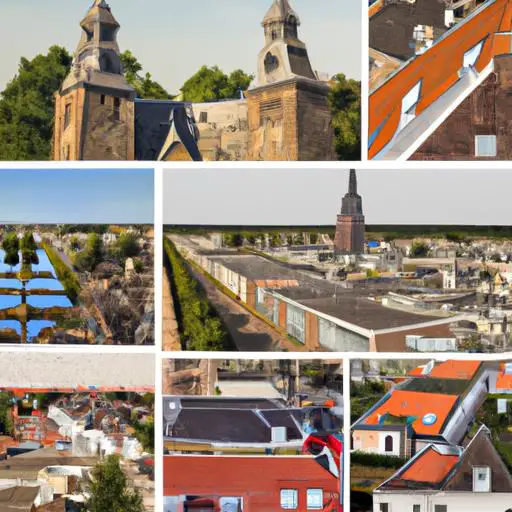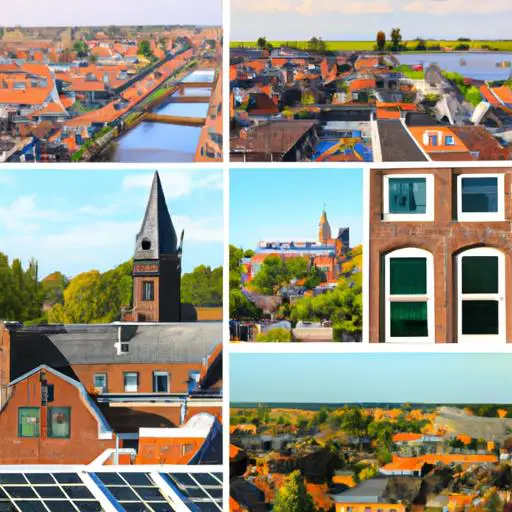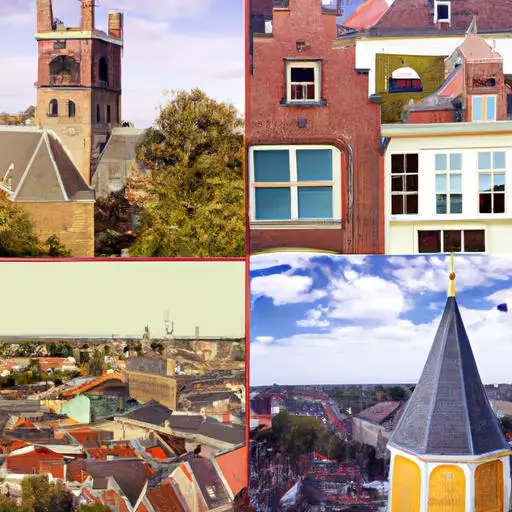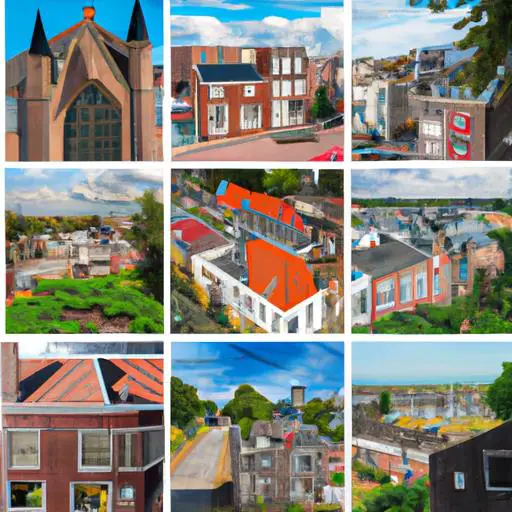Windmills of Kinderdijk NL: Interesting Facts, History Information & Travel Guide

- By
- Aparna Patel
- |
- 23 Sep, 2023
- |
History & Information About Windmills of Kinderdijk, Netherlands
Welcome to Kinderdijk, a picturesque village in the Netherlands, known for its iconic windmills. These magnificent structures have been an integral part of the Dutch landscape for centuries and serve as a testament to the innovative spirit and engineering prowess of the Dutch people. Let's embark on a journey to discover the fascinating history and information about the windmills of Kinderdijk.
History
The history of the windmills in Kinderdijk dates back to the 18th century when the Dutch faced pressing challenges due to frequent flooding. The region, situated below sea level, required a sophisticated drainage system to prevent catastrophic inundations. To combat this issue, a network of 19 windmills was built in 1740.
These windmills, with their huge sails harnessing the power of the wind, were designed to pump water from the low-lying polders (land protected by dikes) into the river. The water was then discharged into the North Sea. The windmills of Kinderdijk formed an ingenious system that effectively controlled water levels in the area, allowing for safe habitation and agriculture.
Architecture and Function
The windmills of Kinderdijk are a marvel of Dutch engineering and exhibit remarkable architectural design. Their strikingly elegant silhouettes, with large rotating sails, have become an iconic symbol of the Netherlands.
Each windmill consists of several parts. The base serves as the foundation and houses the living quarters of the miller and their family. Above the living space is the rotating cap, which can be rotated to face the wind by a system of gears. The cap supports the sails or blades that capture the wind's energy. Inside the mill, intricate mechanisms transmit the rotational motion of the sails to drive pumps and drainage mechanisms, efficiently removing excess water from the surrounding land.
UNESCO World Heritage Site
In recognition of their historical significance and technological innovation, the windmills of Kinderdijk were designated as a UNESCO World Heritage Site in 1997. This prestigious status ensures the preservation and protection of these extraordinary structures for future generations.
Visiting Kinderdijk
Today, Kinderdijk attracts numerous visitors from around the world who are eager to witness the windmills and experience the rich cultural heritage they represent. The village offers a unique opportunity to explore not only the windmills but also a museum and visitor center that provide insights into the history and mechanics behind these engineering marvels.
Visitors can take boat tours or rent bicycles to fully immerse themselves in the enchanting landscape that connects the windmills. The area also features beautiful walking trails, allowing tourists to enjoy the serene atmosphere and stunning scenery.
Preserving a Dutch Legacy
The windmills of Kinderdijk continue to stand as a testament to the Dutch society's ingenuity, resilience, and close relationship with water. They are a tangible reminder of the constant battle against flooding faced by the Dutch people and their dedication to mastering nature through technology.
As you explore Kinderdijk and witness the captivating windmills, take a moment to appreciate the legacy they represent. These magnificent structures not only showcase the engineering prowess of the past but also inspire us to tackle contemporary challenges in sustainable ways.
Don't miss the opportunity to visit Kinderdijk and immerse yourself in the rich history and awe-inspiring beauty of these iconic windmills. It's an experience that will surely leave a lasting impression and deepen your appreciation for the remarkable achievements of human innovation.
Read more
- Muiderslot Castle, Muiden NL: Interesting Facts, History Information & Travel Guide
- De Burcht, Leiden NL: Interesting Facts, History Information & Travel Guide
- Kinderdijk Elshout, Alblasserdam NL: Interesting Facts, History Information & Travel Guide
- Windmills of Kinderdijk, Kinderdijk NL: Interesting Facts, History Information & Travel Guide
Interesting Facts About Windmills of Kinderdijk
Read more interesting post
- Royal Palace of Huis ten Bosch, The Hague NL: Interesting Facts, History Information & Travel Guide
- Windmills of Kinderdijk, Kinderdijk NL: Interesting Facts, History Information & Travel Guide
Travel Guide for Visiting Windmills of Kinderdijk, Netherlands
If you're planning a trip to the Netherlands and want to explore its iconic windmills, a visit to Kinderdijk is a must. Kinderdijk is a small village located in South Holland, known worldwide for its breathtaking collection of 19 beautifully preserved windmills. In recognition of their historical and cultural significance, Kinderdijk's windmills have been designated as a UNESCO World Heritage site.
To start your adventure, you can easily reach Kinderdijk from major cities like Amsterdam or Rotterdam by either public transportation, such as trains and buses, or by renting a car and driving. The journey takes approximately one hour, and once you arrive, you'll be greeted by the picturesque Dutch countryside and the impressive sight of the windmills standing tall along the canal banks.
Upon arrival, you can explore Kinderdijk's windmills by foot or, for a unique experience, rent a bicycle or take a boat tour. Walking through the village allows you to immerse yourself in the peaceful atmosphere and appreciate the monumental mills up close. It's essential to wear comfortable shoes and clothing appropriate for the weather, as you might want to spend several hours discovering all the nooks and crannies of this historic site.
As you wander through Kinderdijk, you'll gain insight into the rich history of windmills in the Netherlands. The windmills of Kinderdijk were built in the 18th century to pump water out of the polders, which are areas of land situated below sea level. These impressive structures played a vital role in reclaiming and protecting large parts of the country from floods. Some of the windmills are still operational, while others have been converted into museums offering a glimpse into the past.
It's worth noting that the busiest time to visit Kinderdijk is during the summer months, especially July and August. If you prefer a more tranquil experience, consider visiting in the shoulder seasons of spring or autumn when the crowds are smaller. Additionally, early morning or late afternoon visits provide an opportunity to capture stunning photographs with soft lighting and fewer people in your shots.
Before leaving Kinderdijk, make sure to stop by the visitor center, where you can learn more about the engineering marvels of the windmills and the fascinating history of the region. The center provides educational exhibits, audio-visual presentations, and a souvenir shop where you can purchase unique mementos to remember your visit.
To conclude, a journey to the windmills of Kinderdijk offers a glimpse into the Netherlands' rich cultural heritage and engineering prowess. Whether you're a history buff, nature enthusiast, or simply seeking a picturesque location for your trip, Kinderdijk will not disappoint. So, pack your bags, grab your camera, and set out to explore the enchanting world of windmills in Kinderdijk, Netherlands.
Read more
- The Royal Netherlands Army Museum, Delft NL: Interesting Facts, History Information & Travel Guide
- Hermitage Amsterdam, Amsterdam NL: Interesting Facts, History Information & Travel Guide
- Windmills of Kinderdijk, Kinderdijk NL: Interesting Facts, History Information & Travel Guide
Frequently Asked Questions about Windmills of Kinderdijk, Netherlands
What are the Windmills of Kinderdijk?
The Windmills of Kinderdijk are a group of historical windmills located in the village of Kinderdijk, Netherlands. They were built in the 18th century to drain the excess water from the polders, low-lying areas of land that are prone to flooding.
Why are they significant?
The windmills of Kinderdijk are significant as they represent a unique engineering feat from the past. They showcase the Dutch expertise in water management and land reclamation. The windmills served an essential purpose in preventing floods and reclaiming land from the water.
How many windmills are there in Kinderdijk?
There are a total of 19 windmills in Kinderdijk. These windmills are UNESCO World Heritage sites and attract thousands of visitors each year.
Can we visit the windmills?
Yes, visitors can explore the windmills of Kinderdijk. There is a designated pathway that allows visitors to walk alongside the windmills and discover their history. Some of the windmills are even open to the public, providing a glimpse into their inner workings.
Are guided tours available?
Yes, guided tours are available for visitors who want a more in-depth experience. Knowledgeable guides can take you through the windmills, share stories about their functioning and the lives of people living in and around Kinderdijk.
What else can we do in Kinderdijk?
In addition to visiting the windmills, you can explore the scenic surroundings of Kinderdijk. There are beautiful walking and cycling paths that offer picturesque views of the countryside. You can also visit the visitor center, which provides more information about the windmills and the region's history.
When is the best time to visit?
The best time to visit the windmills of Kinderdijk is during the spring and summer months when the weather is pleasant, and the surrounding landscape is at its most vibrant. However, Kinderdijk is open to visitors throughout the year, and each season offers a unique experience.
Can the windmills be photographed?
Of course! The windmills of Kinderdijk make for a fantastic photography subject. Visitors are encouraged to capture the beauty of these iconic structures, both from the outside and inside (if permitted).
Is there an admission fee?
Yes, there is an admission fee to access certain areas and attractions in Kinderdijk, including the windmills. The revenue generated from these fees goes towards the maintenance and preservation of this cultural heritage site.
How do I get to Kinderdijk?
Kinderdijk is easily accessible by various modes of transportation. You can take a bus, drive, or even reach by boat from nearby cities like Rotterdam or Dordrecht. There are also guided tours available that include transportation to and from Kinderdijk.
Read more interesting post
- Amsterdam Arena (Johan Cruijff Arena) NL: Interesting Facts, History Information & Travel Guide
- National Monument, Amsterdam NL: Interesting Facts, History Information & Travel Guide
- Royal Delftware Factory, Delft NL: Interesting Facts, History Information & Travel Guide
- Windmills of Kinderdijk, Kinderdijk NL: Interesting Facts, History Information & Travel Guide
